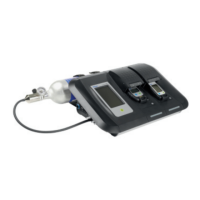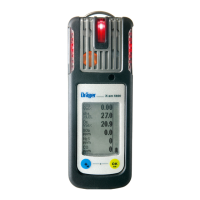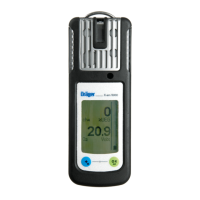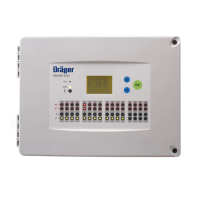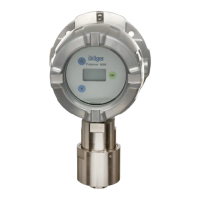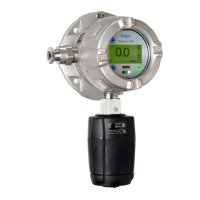Technical manual | X-am® 3500/8000 53
Maintenance
5. Use the tweezers to remove the UV lamp. Hook the tweezers under the UV lamp
and carefully angle it toward the edge of the housing to lift it out of the opening
(IV).
6. Hold the UV lamp by its cylindrical shaft and place the lamp window (C) flat on
the surface of the polishing paper. Polish the lamp window by applying gentle
pressure to the lamp window and moving it in small circles on the polishing
paper in small circles (approx. 5 to 10 seconds) (V).
7. Re-insert the UV lamp. The metal tabs (D) on the lamp must be aligned so that
they touch the spring contacts in the sensor housing (VI). Gently press the UV
lamp onto the lamp window in the opening. Be careful not to scratch or soil it.
8. To re-insert the ionisation cell, insert the contact pins in the opening on the
sensor options board and carefully press it into place until the cell is laying flat
on the lamp window. Do not bend the ionization cell.
9. Insert the plastic insert.
10.Insert a new cotton filter (B; from the PID cleaning set).
11.Insert a water protection film (A; from the PID cleaning set) with the glossy side
facing up.
12.Place the sensor cap on (with the opening over the ionisation cell). The sensor
cap must click into place.
13.Place the shielding cap on. The opening in the shielding cap must be over the
gas inlet on the sensor cap and rest securely on the shielding body. Use the
arrows markings on the shielding body for orientation.
14.Insert the sensor. For further information, see the following chapter:
"Exchanging, adding or removing a sensor", page 48
15.Carry out the zero-point adjustment.
16.Carry out the span calibration.
If the warning persists after the cleaning, and the sensor cannot be calibrated, the
PID must be exchanged (For further information, see the following chapter:
"Exchanging, adding or removing a sensor", page 48).
6.9 Exchange the device components
WARNING
Loss of explosion protection!
Incorrect assembly or disassembly may compromise IP or explosion protection.
► Make sure that all seals are in their correct positions.
► The seals and sealing surfaces may not be damaged and must be clean.
6.9.1 Opening the gas detector
NOTICE
Data loss and damage to the gas detector!
If the housing of the gas detector is opened while the gas detector is switched on,
data may be lost and the gas detector may be damaged.
► Switch off the gas detector before opening the housing.

